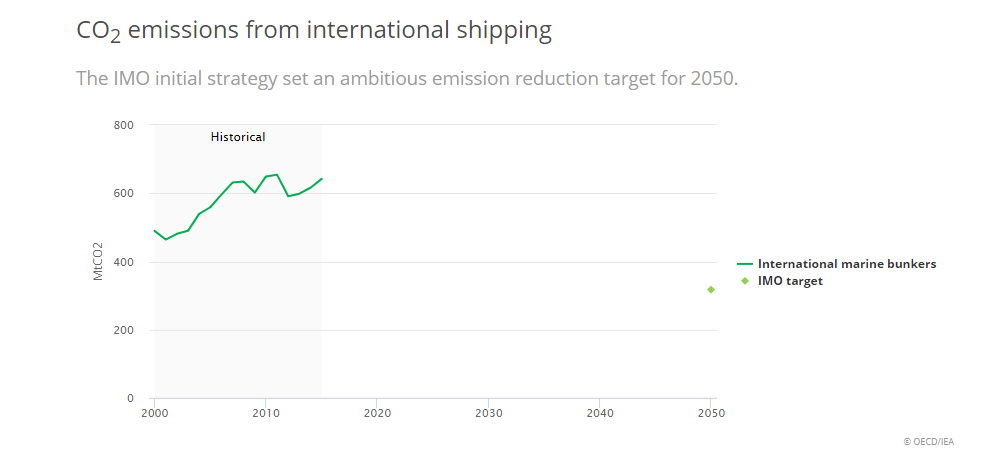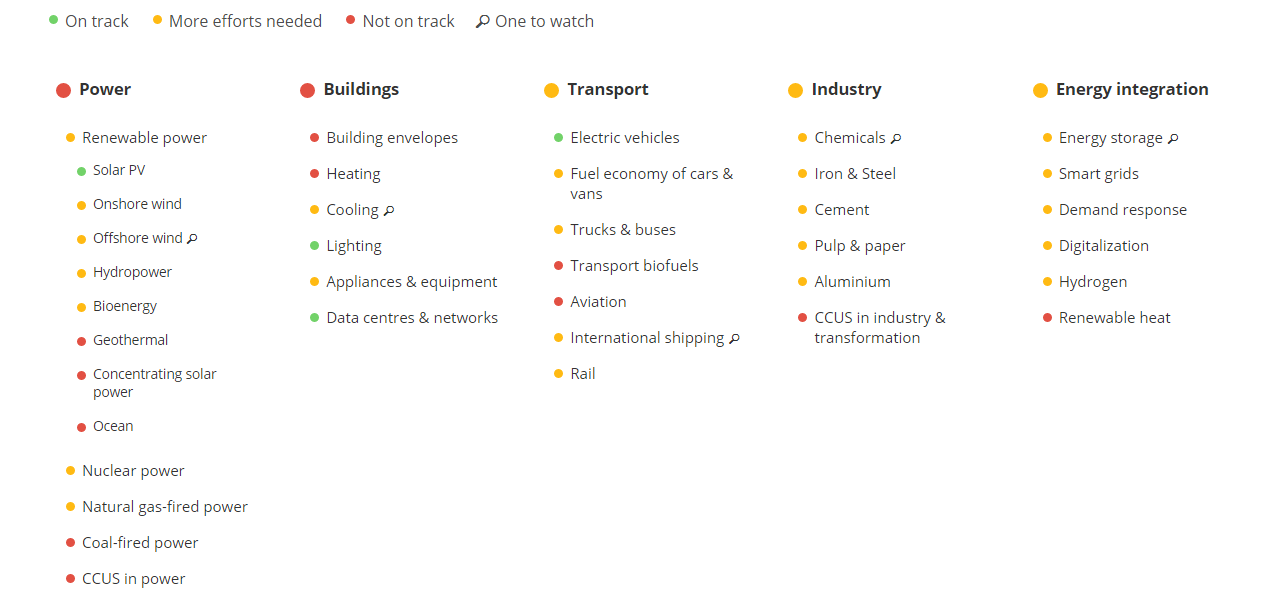Only 4 out of 38 energy technologies and sectors were on track to meet long-term climate, energy access and air pollution goals in 2017, according to the International Energy Agency’s analysis of the clean-energy transition. For the shipping sector, IEA hailed the IMO agreement to reduce emissions as ‘the first global climate framework for shipping’, noting however that more efforts are needed for the transition of shipping towards clean energy and sustainability.
IEA released Tracking Clean Energy Progress (TCEP), a newly updated website assessing the latest progress made by key energy technologies, and how quickly each technology is moving towards the goals of the IEA’s Sustainable Development Scenario (SDS). The analysis includes a series of high-level indicators that provide an overall assessment of clean energy trends and highlight the most important actions needed for the complex energy sector transformation.
The findings highlight that some technologies made tremendous progress in 2017, with solar PV seeing record deployment, LEDs quickly becoming the dominant source of lighting in the residential sector, and electric vehicle sales jumping by 54%.
But IEA analysis finds that most technologies are not on track to meet long-term sustainability goals. Energy efficiency improvements, for example, have slowed and progress on key technologies like carbon capture and storage remains stalled. This contributed to an increase in global energy-related CO2 emissions of 1.4% last year.
It also found that total public spending on low-carbon energy technology innovation rose 13% in 2017, to more than USD 20 billion. Dr Fatih Birol, IEA’s Executive Director, said:
There is a critical need for more vigorous action by governments, industry, and other stakeholders to drive advances in energy technologies that reduce greenhouse gas emissions. The world doesn’t have an energy problem but an emissions problem, and this is where we should focus our efforts.
A total of 11 of 38 technologies surveyed by the IEA were significantly not on track.
- Unabated coal electricity generation (meaning generation without Carbon Capture, Utilisation and Storage, or CCUS), which is responsible for 72% of power sector emissions, rebounded in 2017 after falling over the last three years.
- Two technologies, onshore wind and energy storage, were downgraded this year, as their progress slowed. This brought the number of technologies “in need of improvement” to a total of 23.
For shipping specifically, IEA welcomed as ‘a historic milestone’ the IMO decision to cut emissions from shipping at least 40% by 2030 compared with 2008, and to pursue efforts to reduce emissions intensity by 70% by 2050. IE noted that the new climate strategy will have far-reaching consequences for the sector, requiring the very rapid adoption of efficient technologies and fuel switching, at a much faster pace than has been achieved to date.
Nevertheless, while the Initial Strategy includes a list of candidate short-, mid- and long-term measures, the EEDI is the only emissions regulation currently in place. Swift implementation and rapid scale up of new measures, including a strengthened EEDI, an operational efficiency standard, a low-carbon fuel mandate or standard and a carbon pricing mechanism are essential to decarbonise shipping.

This year, the TCEP tracks progress against the Sustainable Development Scenario, introduced in the World Energy Outlook 2017, which depicts a rapid but achievable transformation of the energy sector. It outlines a path to limiting the rise of average global temperatures to “well below 2°C,” as specified in the Paris Agreement, as well as increasing energy access around the world and reducing air pollution.
In this scenario, meeting long-term sustainability goals requires an ambitious combination of more energy efficient buildings, industry and transport, and more renewables and flexibility in power.





























































